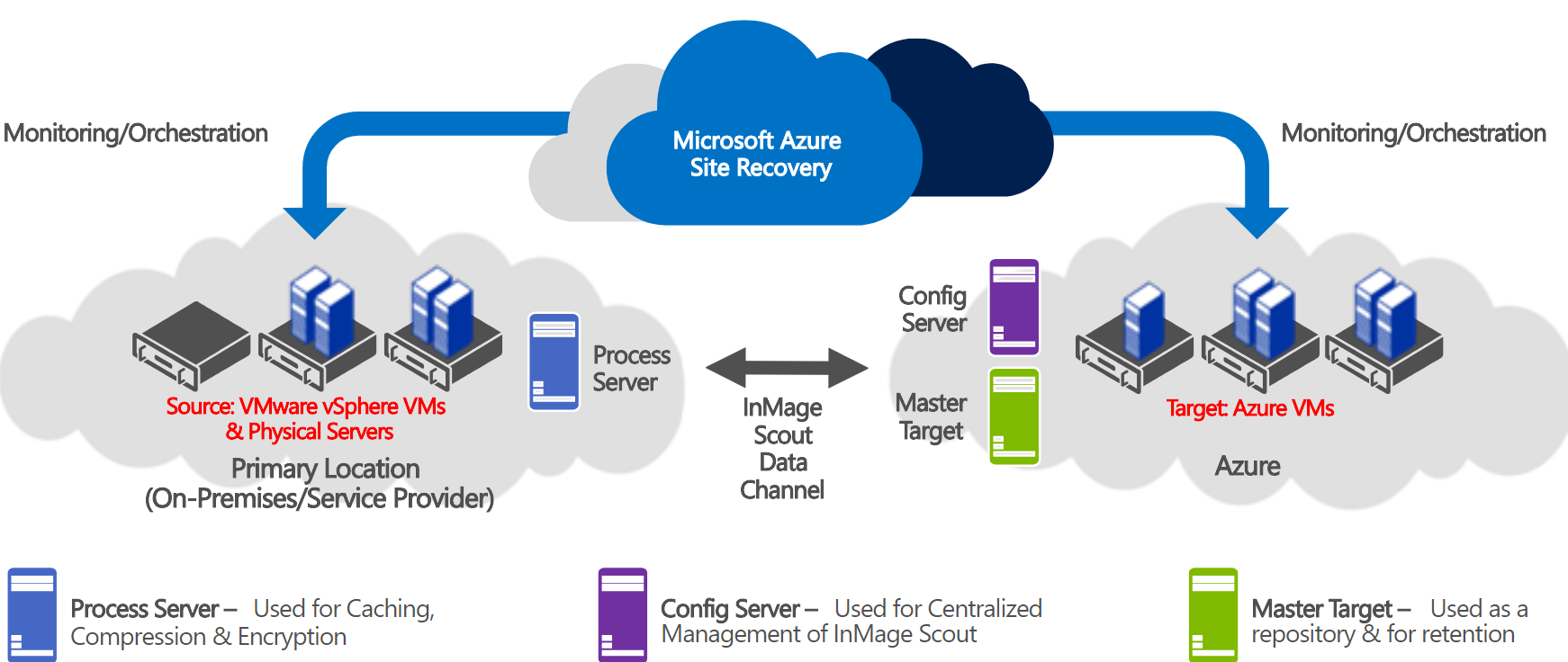TECHNOLOGIES
Cloud Backup / Disaster Recovery
Azure Backup is an Azure-based service that can use data in Microsoft cloud for backup (or protection) and restoration. It replaces the existing on-premise or off-site backup solution with a stable and cost-competitive cloud-based solution.
Azure Backup provides the following key advantages:

Automatic storage management
If Azure Backup is used, the use of internal storage devices will not cost anything. Azure Backup automatically assigns and manages backup storage and uses the payment model based on usage.
Unlimited expansion
Azure Backup uses the basic performance and unlimited size of Azure cloud to provide high availability without any maintenance or monitoring overhead.
Transmitting unlimited data
Azure Backup does not limit the quantity of inbound or outbound data.
Data encryption
Azure Backup safely protects data using various encryption methods.
Application backup
As Azure Backup provides consistent application backup, data restoration does not require additional modification.
Preservation
It is possible to use the Recovery Services vaults to preserve data for as long as desired. Azure does not limit the time during which data can remain in the Recovery Services vaults.
Technologies necessary for supporting Azure Backup
Azure Backup (MARS) agent
-
Backing up files and folders in actual or virtual Windows OS
-
No separate backup server is necessary.
System Center DPM
-
VSS(Microsoft Visual SourceSafe)
-
Sufficient flexibility when backup is brought
-
Segmented recovery
-
Recovery Services credentials can be used.
-
Linux support for Hyper-V and VMware VM
-
Using DPM 2012 R2 to back up and restore VMware VM
Azure Backup Server
-
VSS(Microsoft Visual SourceSafe)
-
Sufficient flexibility when backup is brought
-
Segmented recovery
-
Recovery Services credentials can be used.
-
Linux support for Hyper-V and VMware VM
-
VMware VM backup and restoration
-
System Center license is not necessary.
Azure IaaS VM Backup
-
VSS(Microsoft Visual SourceSafe)
-
Default backup for Windows/Linux
-
It is not necessary to install a specific agent.
-
Fabric-level backup that does not require backup infrastructure
What is Azure Site Recovery?
The organization must introduce a business continuity and disaster recovery (BCDR) strategy to safely maintain data and execute apps and workload without interruption when planned or unpredicted interruption occurs.
Azure Site Recovery maintains apps and workload during interruption and guarantees continuity.
Why Azure Site Recovery?
Site Recovery can manage replication for the following:
● Replicating Azure VM between Azure regions
● On-premise VM, Azure Stack VM and physical server
● Workload replication
Data recovery
Site Recovery adjusts application data without blocking it. During replication to Azure, data is stored in the Azure Storage and resilience is provided. In the case of failover, Azure VM is made based on replicated data.
RTO and RPO targets
Maintaining the recovery time objective (RTO) and recovery point objective (RPO) within the limits of the organization
Maintaining the app consistency through failover
Application snapshot can use recovery points for replication. This snapshot captures all disk data and all data in memory, plus all transactions in progress.
Uninterrupted test
It is possible to easily conduct the disaster recovery test without affecting the replication in progress.
Flexible failover
It is possible to conduct planned failover in provision against unexpected failures. It is possible to conduct unplanned failover while minimizing data loss according to the frequency of replication in the case of unexpected disasters.
User designated recovery plan
Users can use recovery plans to designate the failover and recovery of multiple hierarchical applications, which are executed in several VMs, and determine the sequence.
BCDR integration
Site Recovery is integrated with other BCDR technology.
Azure Automation and network integration
The Azure Automation library provides various scripts for Site Recovery, and can be integrated with the Azure Network for efficient network conversion and management.
Technologies necessary for supporting Azure Site Recovery
Reviewing replicated scenarios
- It is possible to replicate Azure VM in another region.
- Replicating on-premise VMware VM, Hyper-V VM, physical servers (Windows and Linux) and Azure Stack VM to Azure
- Replicating the Hyper-V VM and physical server, managed in on-premise VMware VM and Center VMM, to the auxiliary site



